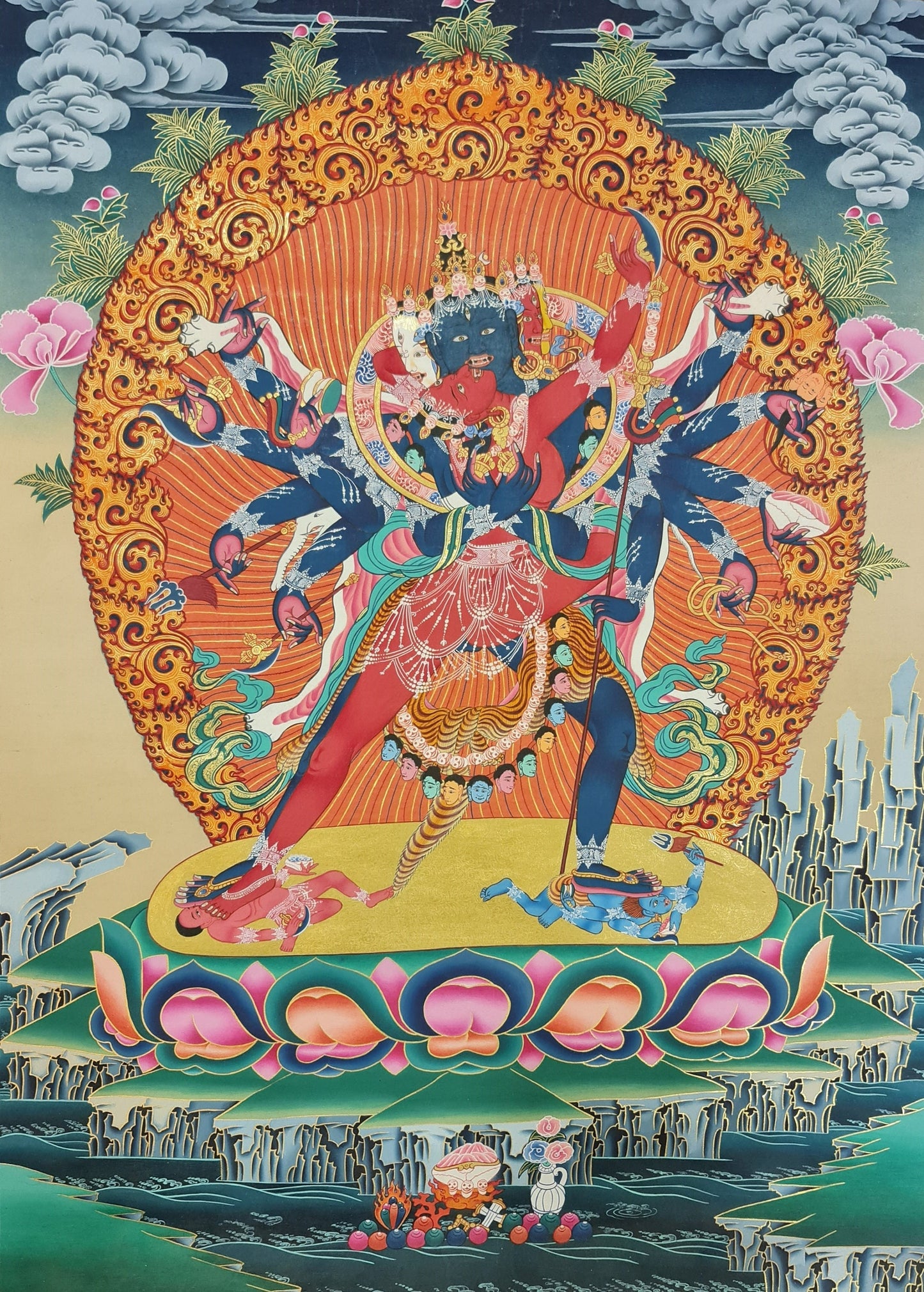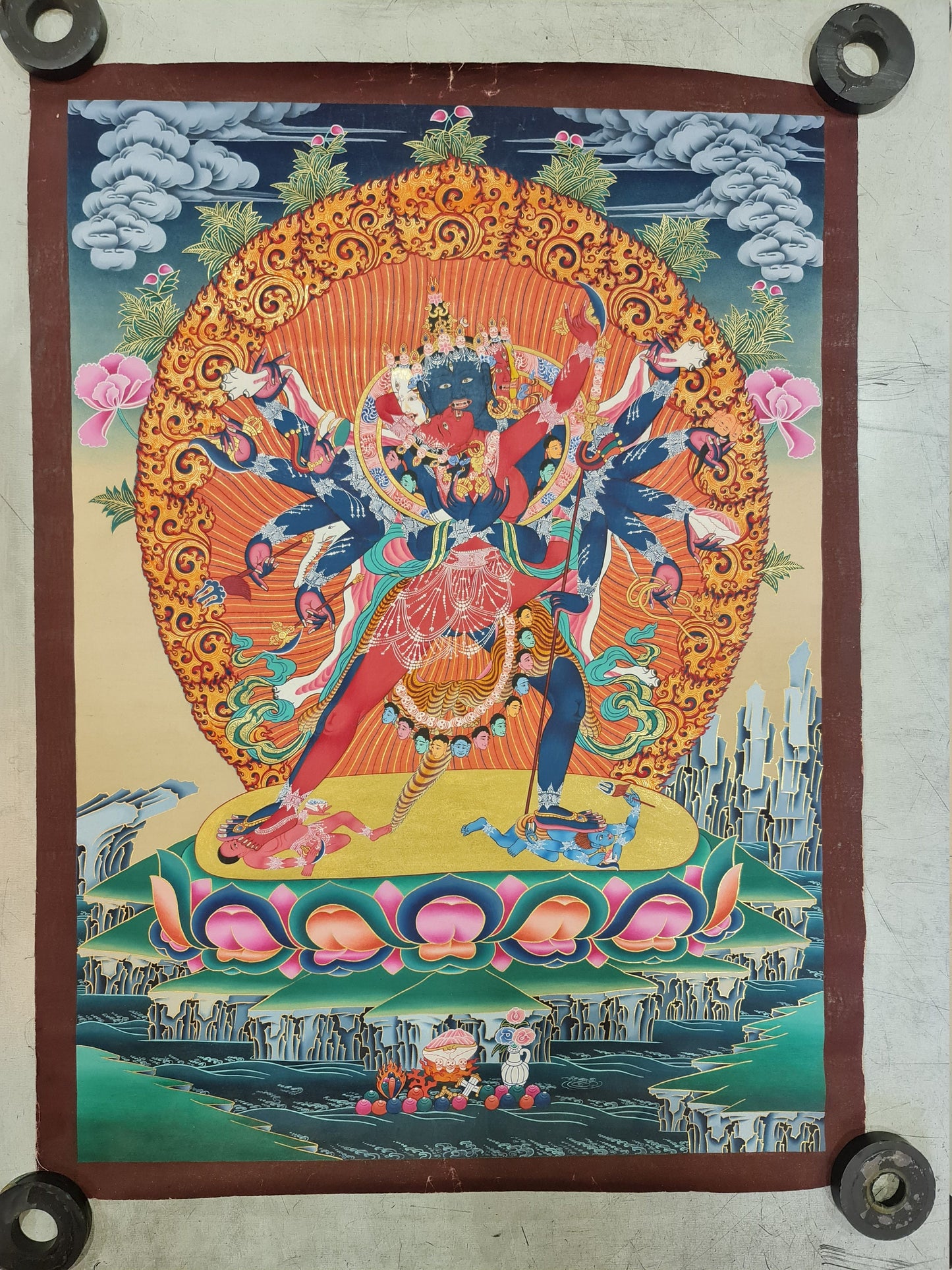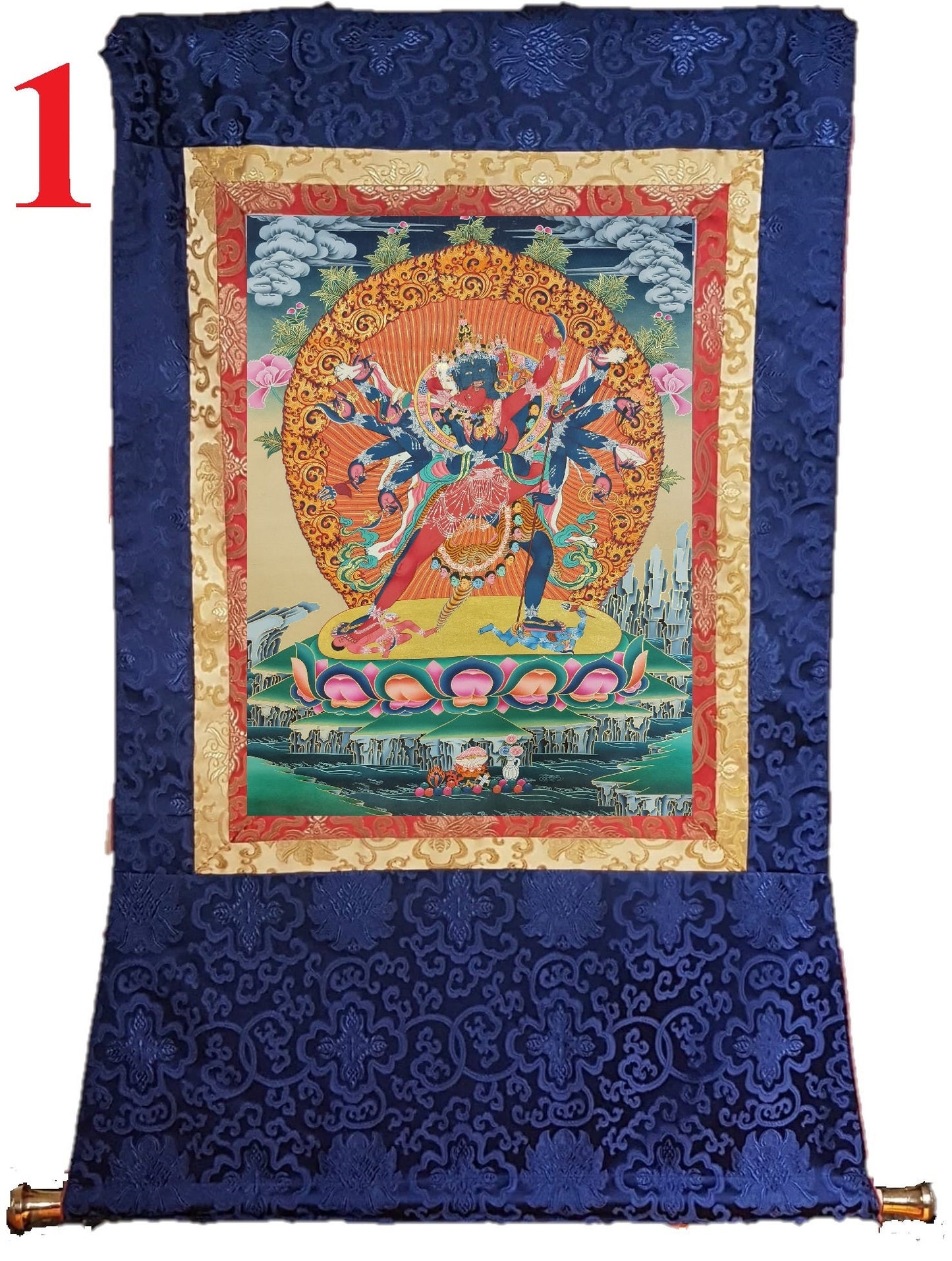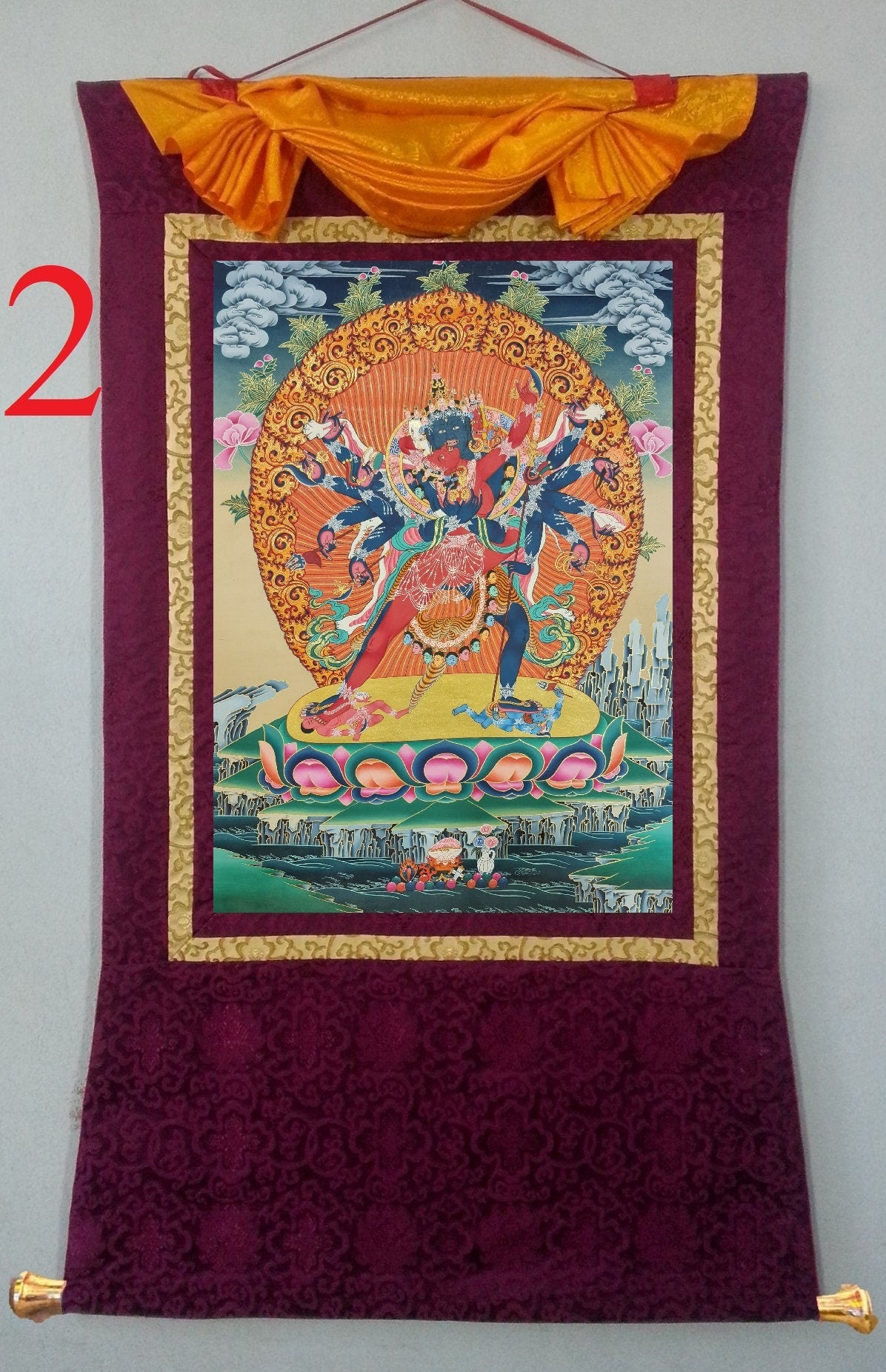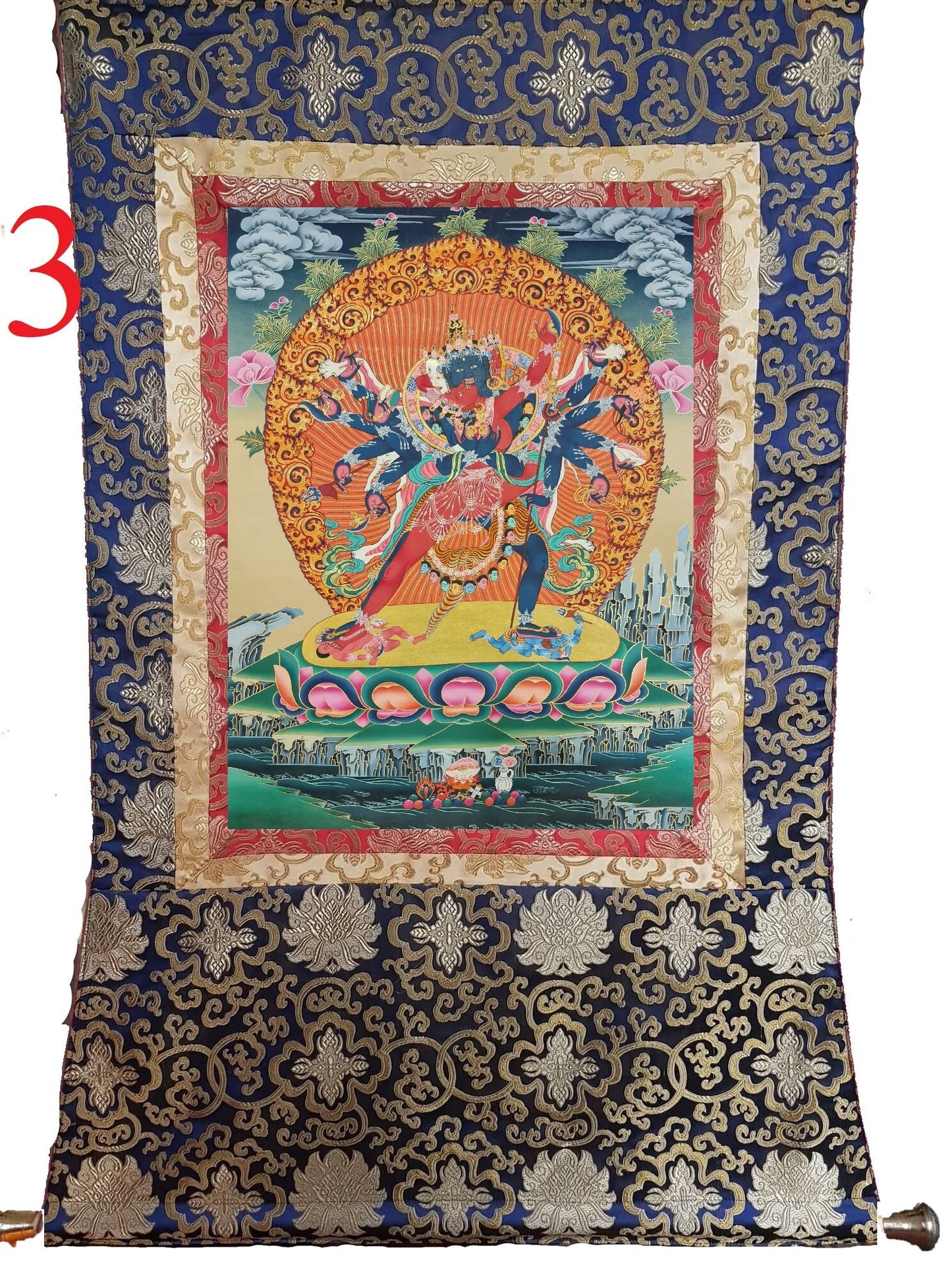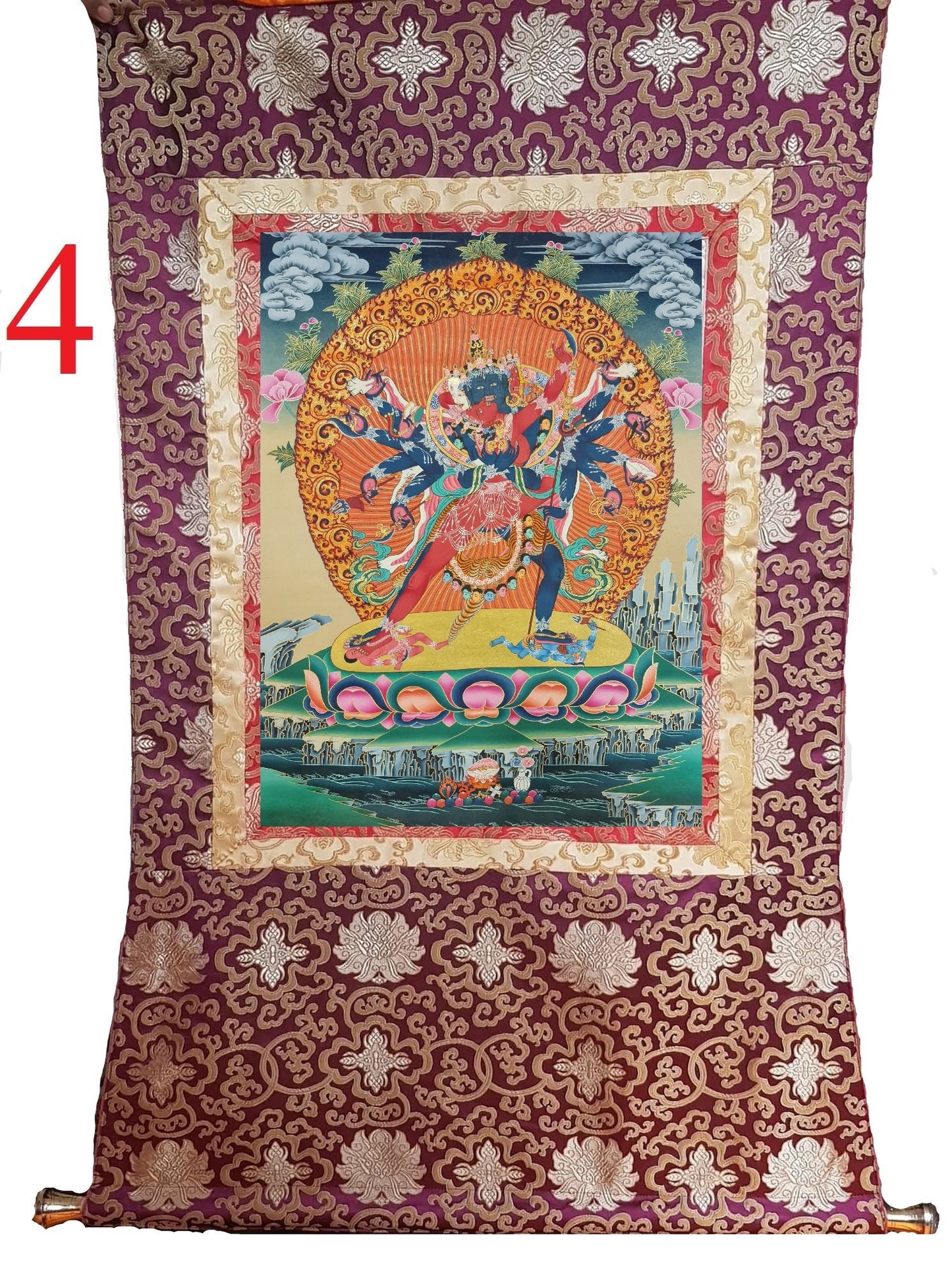1
/
of
6
My Store
222. 12 Arm Chakrasamvara Thanka (Thangka) Painting. Free Brocade / Free Shipping.
222. 12 Arm Chakrasamvara Thanka (Thangka) Painting. Free Brocade / Free Shipping.
Regular price
$725.00 USD
Regular price
Sale price
$725.00 USD
Quantity
Couldn't load pickup availability
Chakrasamvara and Vajravarahi:
The central deity of the mandala, Saṃvara, is a form of Heruka, one of the principal yidam or meditational deities of the Sarma schools of Tibetan Buddhism. Saṃvara is typically depicted with a blue-coloured body, four faces, and twelve arms, and embracing his consort, the wisdom dakini Vajravārāhī in Yab-Yum. Other forms of the deity are also known with varying numbers of limbs. Saṃvara and Vajravārāhī are not to be thought of as two different entities, as an ordinary husband and wife are two different people; in reality, their divine embrace is a metaphor for the union of great bliss and emptiness, which are one and the same essence. In Western meditation texts his name is often translated to mean "Highest Bliss". Meditation on Cakrasaṃvara is an advanced practice transmitted by one's lama, and binds the mind of the meditator to enlightenment itself Chakrasamvara (Tibetan: 'khor lo bde mchog. English: the Wheel of Bliss).
Chakrasamvara is the principal deity of the most important Sanskrit Tantra text of the Anuttarayoga Wisdom (mother) classification of the Vajrayana Buddhist Tradition. Chakrasamvara can also be included amongst the most popular deities in Tibetan Tantric Buddhism, the Himalayan region and Tibet, after the 11th century. His purpose and function in the Buddhist Vajrayana religious system is as a model for meditation practice employed by serious Tantric practitioners. There is a vast corpus of literature on the subject of Chakrasamvara. The original source material is written in the Indian Sanskrit language with dozens of Sanskrit commentaries and hundreds of later Tibetan commentaries, including ritual texts, dance performance instruction, and meditation manuals, all written in the Tibetan language.
In some ritual texts, Vajrayogini( Consort of Chakrasamvara) is referred to as Vajra Varahi, however her most common name is Vajrayogini, or Vajra Dakini. The colour of Chakrasamvara is blue and Vajrayogini is red. Their general mood and appearance is semi-peaceful and semi-wrathful. "Chakrasamvara, blue in colour, the right foot is extended pressing on red Kalaratri and the left drawn in [pressing] on black Bhairava. With one face and two hands, three eyes, the right hand holds a vajra and the left a bell; embracing the consort, with a crown of five dry human heads as a crown, a necklace of fifty wet, and adorned with the six bone ornaments. [Chakrasamvara is] embraced by the consort Vajravarahi, red in colour, with one face and two hands. The right hand holds a curved knife pointing to the ten directions. The left holds a skullcup filled with the five nectars and embraces the Father. She is adorned with a crown of five dry human heads, a necklace of fifty dry heads and the five bone ornaments." At the four corners surrounding Chakrasamvara and consort are the four principal retinue figures called 'dakini.' Each figure has one face and two arms, a unique colour, standing with the proper right leg straight and the left leg bent. The names of the four Dakini are: red Khandaroha, green Lama, yellow Rupini, and blue Dakini. In the four intermediate directions are four gold vases each topped with a white skull cup. (The names of each of the four retinue figures are written on the reverse of the painting in Tibetan script).
The meditational deity Chakrasamvara is common to all the New Schools of Himalayan and Tibetan Buddhism (Sarma Traditions: Sakya, Kagyu, Jonang and Gelug). Within the Gelug School the deity is commonly referred to as Heruka. Within the other three schools the term 'heruka' refers to a male meditational deity of the Anuttarayoga classification when appearing in a simplified one face and two-armed appearance. The various deities of Hevajra, Guhyasamaja, Kalachakra, Vajrabhairava and Chakrasamvara all have simplified 'heruka' deity appearance. Among the many different traditions and mandalas of Chakrasamvara practice, this form with one face and two-arms first entered Tibet with the great translator Rinchen Zangpo in the 11th century. Other traditions and lineages of the two-armed form of Heruka Chakrasamvara such as the tradition of Mitra Yogin followed later.
Size:
Size without Brocade : 16 inches by 22 inches
Shipping:
We ship within 2 business day.
DHL Shipping: 5 to 8 business days with tracking number.
Insurance against loss.
We do wholesale too.
Our one and only priority in this business is to provide "Hassle free Customer Satisfaction". We have "Quality Products" with "Cheapest Price" in the market.
Please contact us to resolve any issues. Contact us via email before leaving any negative or neutral comments. We promise you that we will resolve any issues.
Please confirm the return address with us before returning the product.
Share
